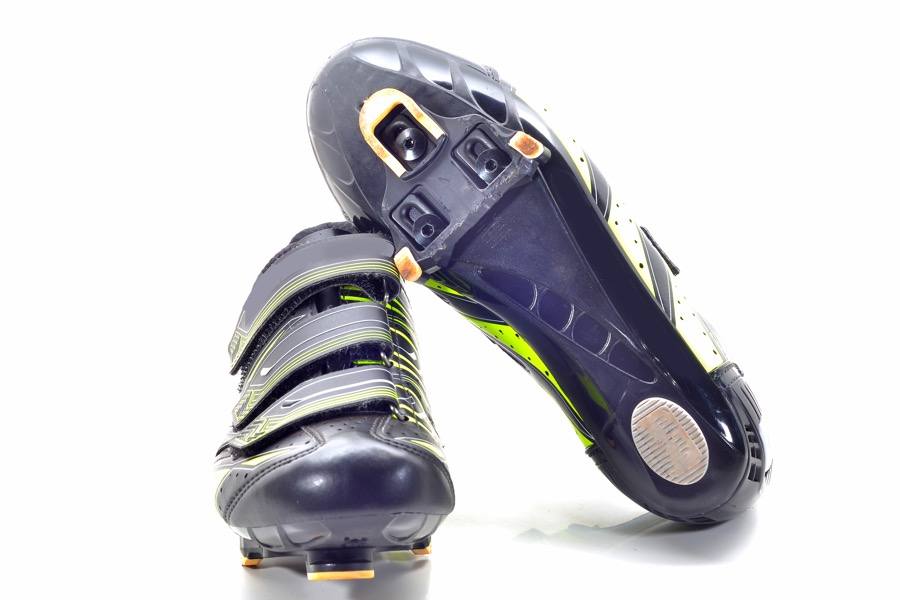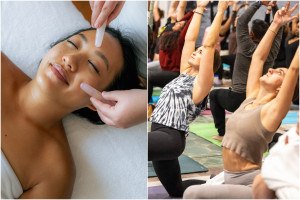Everything You Need to Know Before Buying Indoor Cycling Shoes
From fit to price and everything in between, here's your buying guide to spin shoes.
Welcome to Spin Week at Be Well Philly! Each day, we’ll bring you the best and the latest on info on indoor cycling around Philadelphia. Stay tuned for more great spinning articles!
Let’s talk spin shoes. If you’re as addicted to spin as we are, then you know that wearing a pair of those funky, metal-accented cleats make a huge difference. Because these shoes clip your feet into stationary bike pedals, you’ll not only get more stability during your ride, but also the ability to get more power out of each upward stroke.
While upscale boutiques like SoulCycle, Flywheel, and Revel Ride all stock shoes that you can borrow or rent, there’s definitely value in investing in your own pair if you’re a frequent class-goer. For one thing, it’ll cut down on all those rental fees. For another, you’ll be able to slip into shoes that are perfectly molded to your foot — and your foot only.
To help you find your sole mate (get it?), we’ve polled some Philly spin pros for their top tips. Read on for our guide to buying your next pair of spin shoes.
How Much Should I Spend?
Since these shoes are going to be in use for a while, you shouldn’t go for the cheapest pair you can find. For a decent pair, you should plan on shelling out $80 to $100, says Chestnut Hill Cycle Fitness owner Alli Bradley. And keep in mind: Clips are often sold separately, and they’ll run you around $20, according to The Wall Cycling Studio owner Juliet Sabella. However, it is possible to save some cash on clips — I found some on Amazon for $13, and they’ve been solid so far.
What the Heck Are Clips?
Clips — the metal pieces that are attached to the bottom of cycling shoes to attached them to the pedals — come in two styles, SPD and Delta. Does it matter which kind you get? Absolutely. Why? Because if you’re going to bring your SPD-clip-compatible shoes to a gym that only has Delta clip pedals, your shoes won’t work. What a bummer! That’s why one of the first questions Wissahickon Cyclery’s Ryan Filson asks shoppers is what type of pedals their indoor cycling bike or studio has. Not sure? Most studios around Philly have SPD-compatible pedals — but it’s worth double checking, because once the clips are added to the shoes, you may not be able to return them, says Sabella. Some studios have both: SoulCycle, FlyWheel, and Revel Ride all have dual-sided pedals which allow compatibility with both SPD and Delta clips. #winning.
What Size Should I Get?
Because a lot of spin shoe brands use European sizing, you’ll want to check a conversion chart to find what number matches your sneaker size. You may even need to bump up a size to give your foot enough space during the ride, says Bradley, or sometimes a half size is all it takes, says Sabella, to account for the fact that spin shoes tend to be more rigid than sneakers. But the best trick of all when looking for a good fit is to get sized by a professional. In this age of Amazon, it may seem easier to order online, but the pros at Wissahickon Cyclery in Chestnut Hill and Trek Bikes in Manayunk will be able to help you find a pair that’s best for your unique feet.
What Are the Best Brands?
While everybody’s feet are different, there are a few brands that have earned gold stars in local spin pros’ books. Owner of Revel Ride, Jamie Promislo thinks Pearl Izumi makes the most comfortable spin shoes (hence why she decided to stock her spin studio with them), and she prefers velcro straps because they’re easy to tighten and slip on and off. Sabella favors Garneau because they check all of the boxes: they keep her feet cool, provide ankle support, and they have a “Boa Dial” — a small knob you can turn to tighten the fit. Bradley rocks Specialized Women’s Riata Mountain Biking shoes with the SPD clips, while Filson says that Giro and Specialized are the brands he sells the most of at Wissahickon Cyclery.
How Often Do I Need to Replace Them?
Not often, especially if you put them on right before hopping on the bike and remove them after. “Because you aren’t wearing them down like running shoes and they don’t suffer a ton of wear-and-tear. Instead you may just need to replace the cleat at some point,” says Bradley.
Is That All?
One last thing: If you’re used to riding in sneakers with your feet in cages, the addition of cycling shoes may mean you’ll need to adjust your seat, says Sabella. Make sure to wave over an instructor the first time you use your new shoes — we promise, they’ll appreciate you asking for help.
Like what you’re reading? Stay in touch with Be Well Philly—here’s how:
- Like Be Well Philly on Facebook
- Follow Be Well Philly on Instagram
- Get the Be Well Philly Newsletter
- Follow Be Well Philly on Twitter



